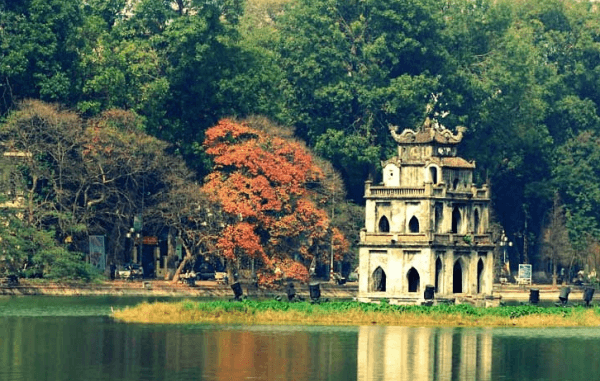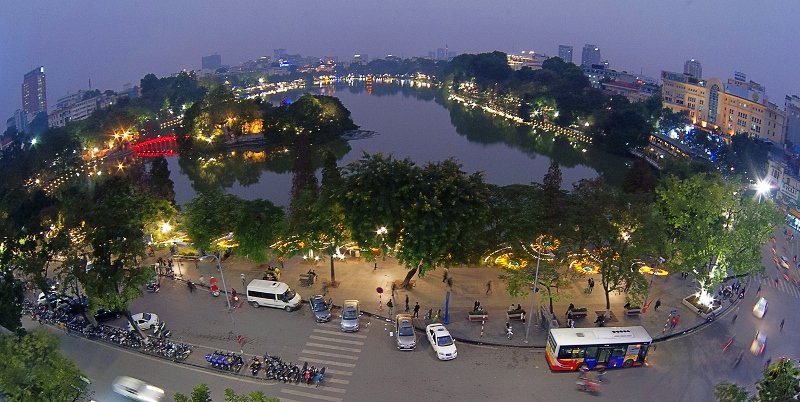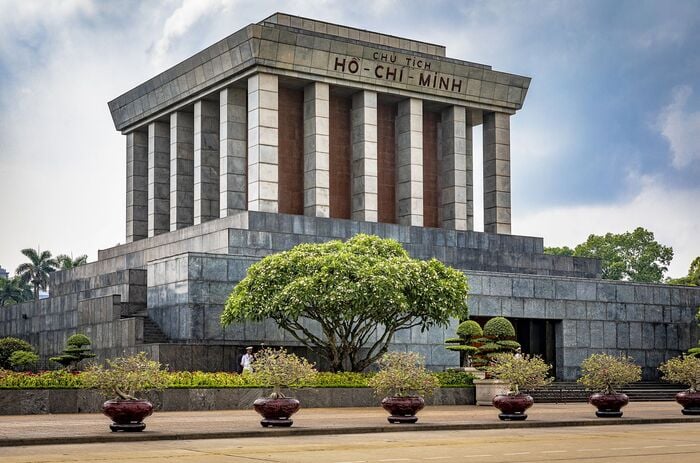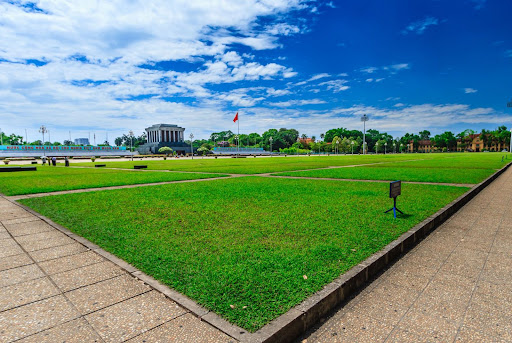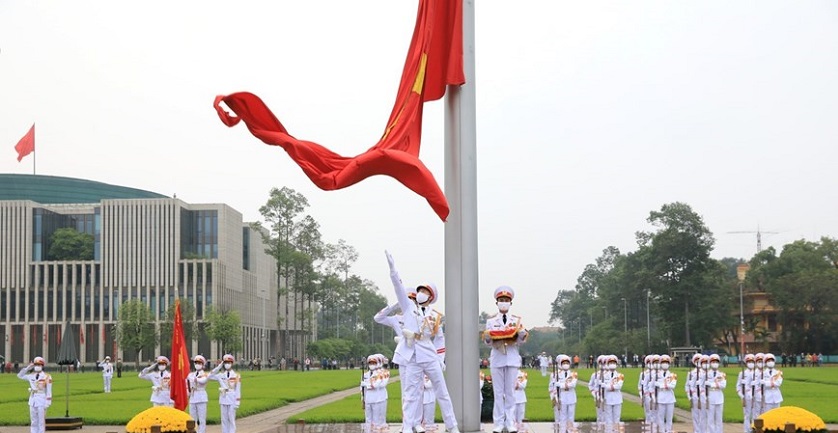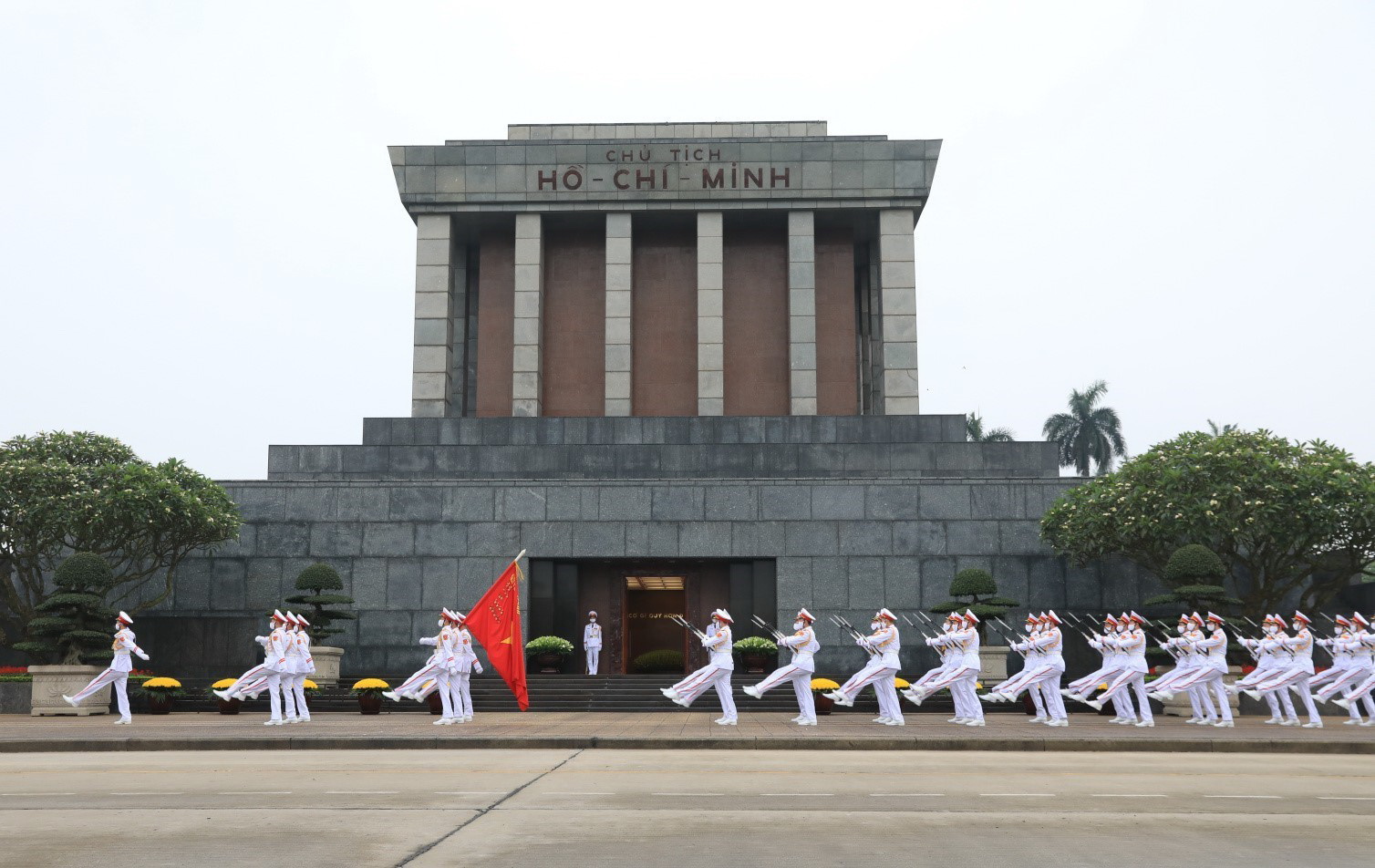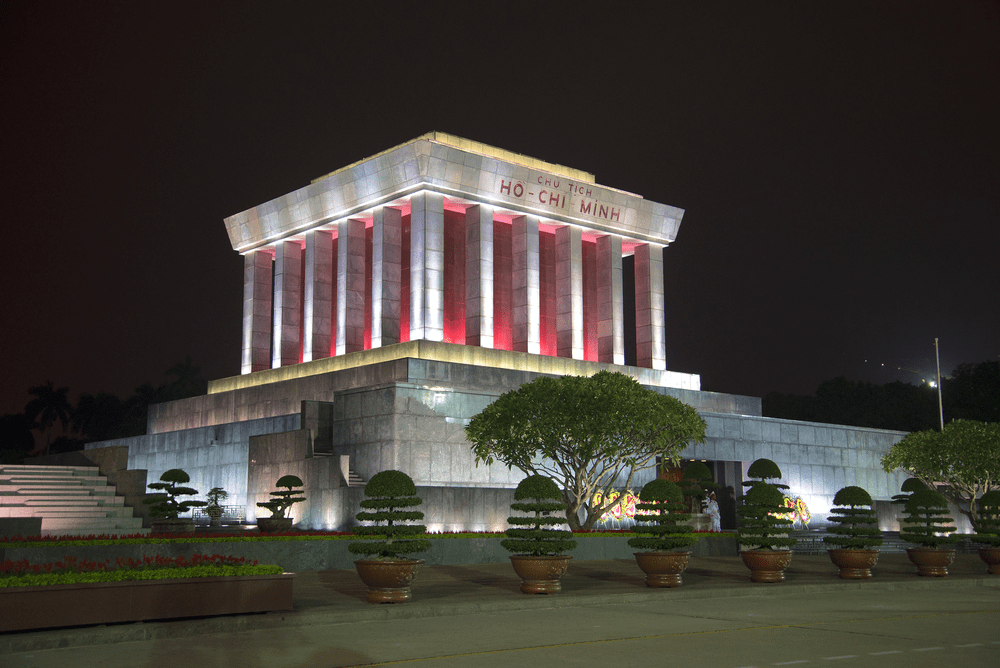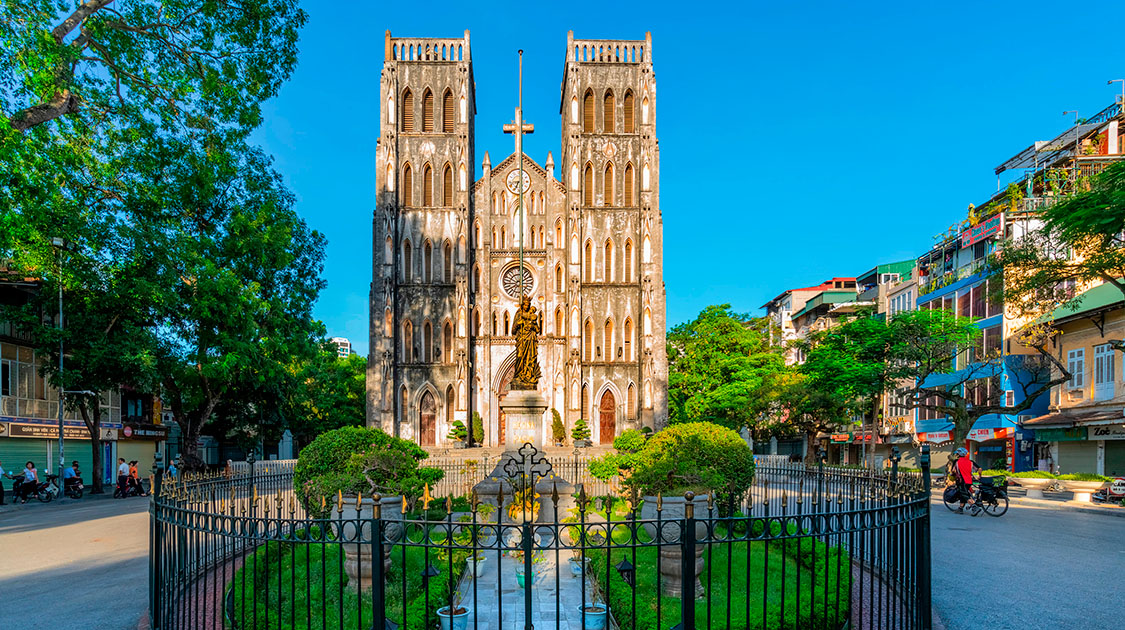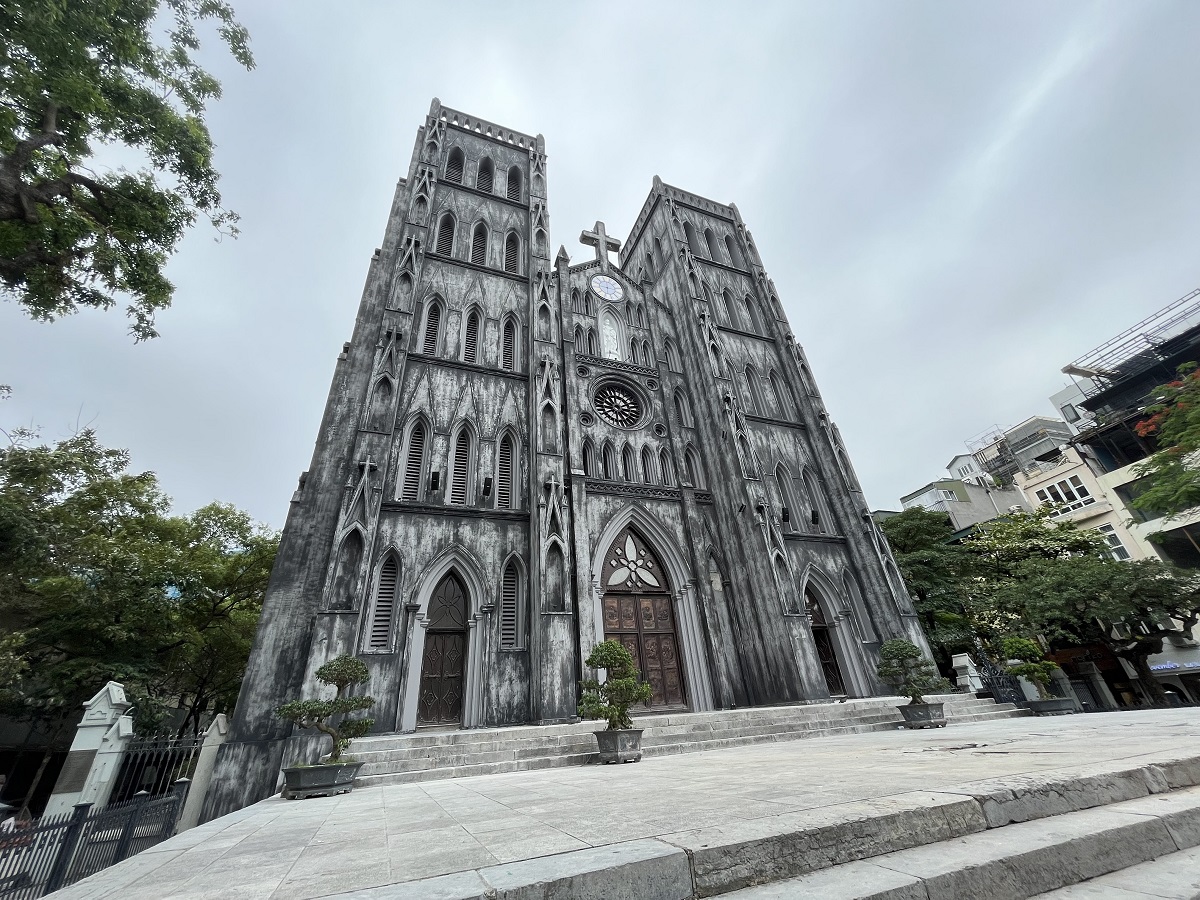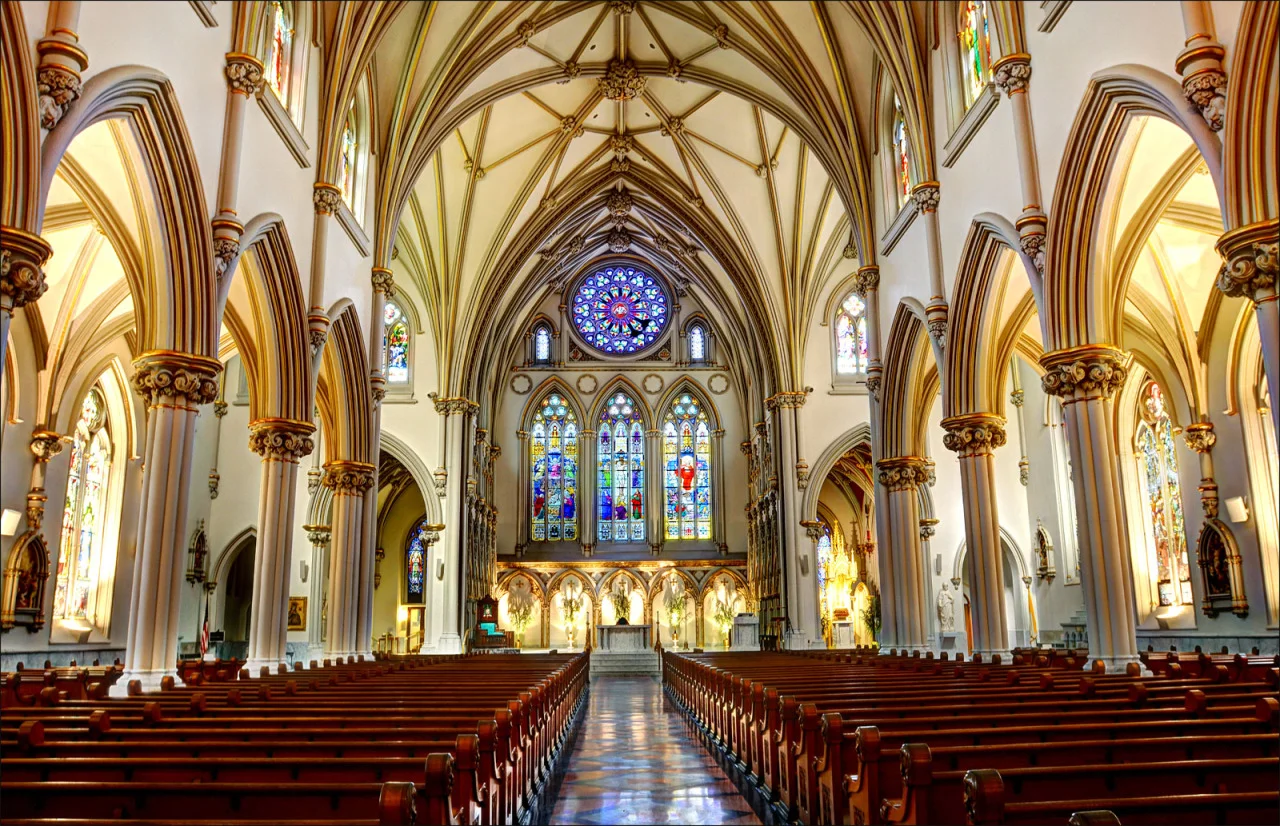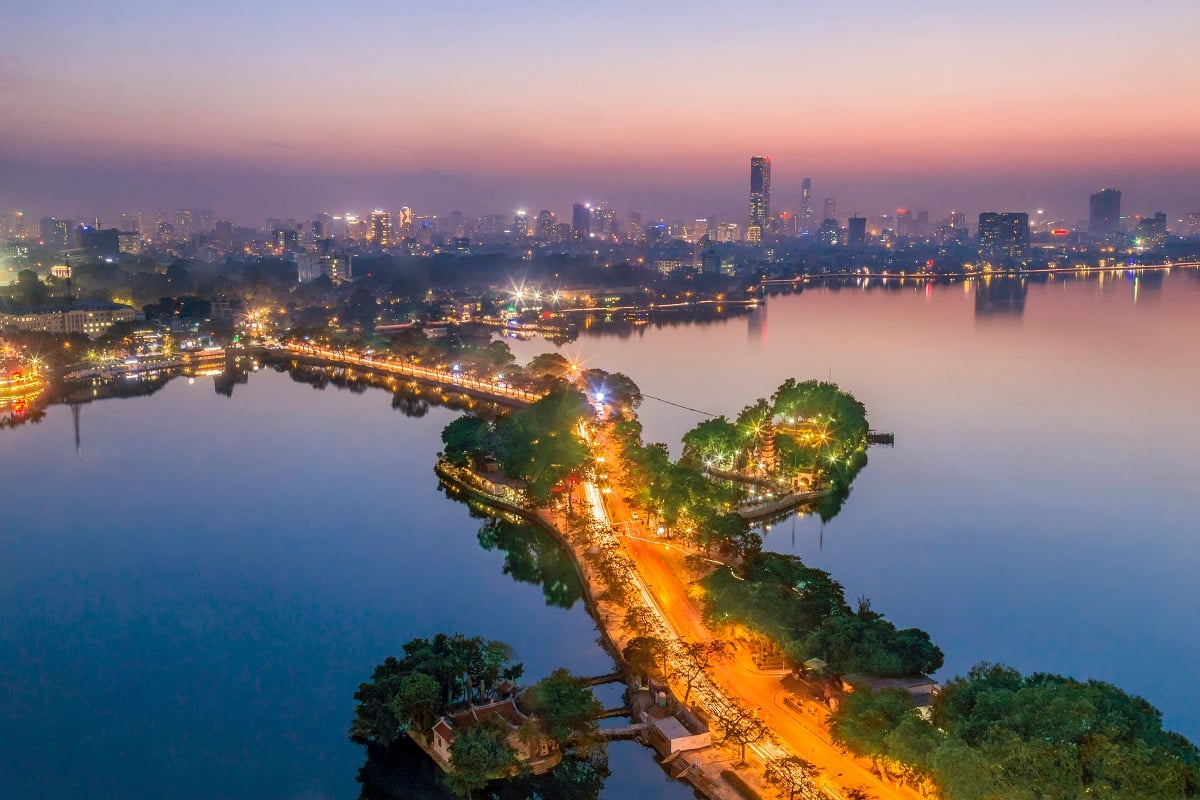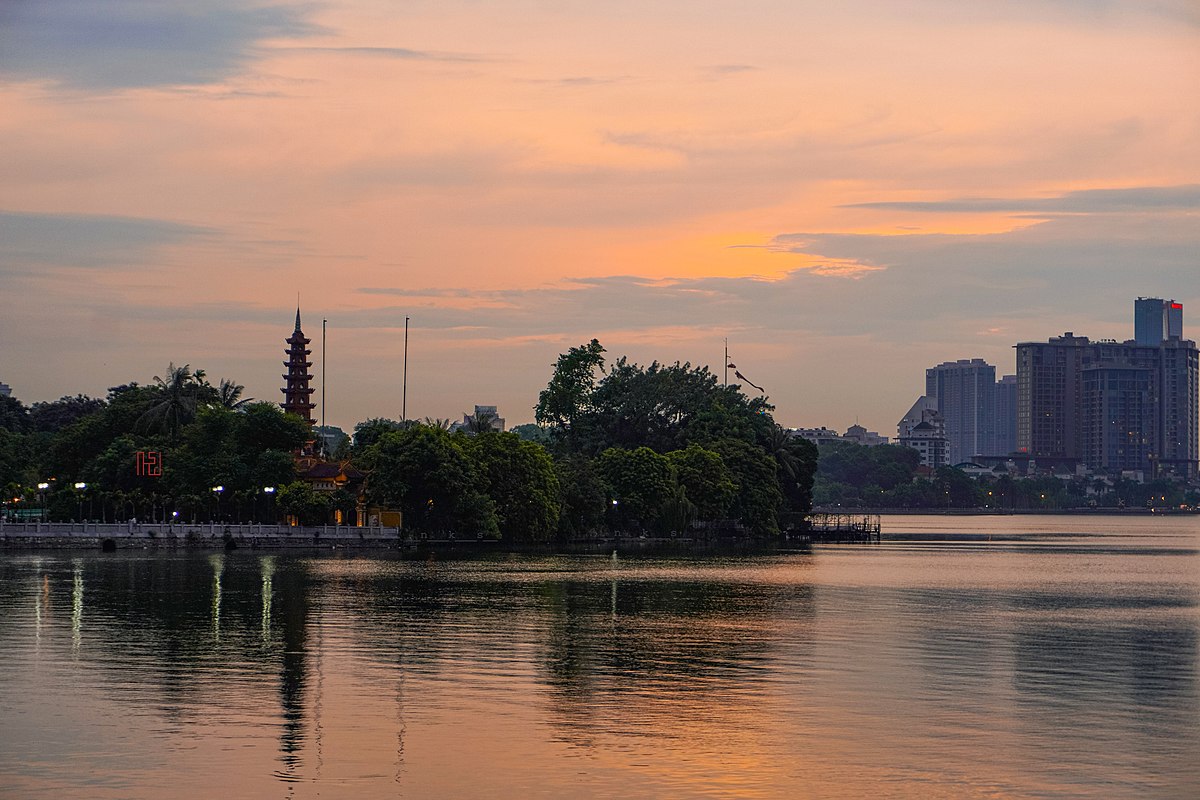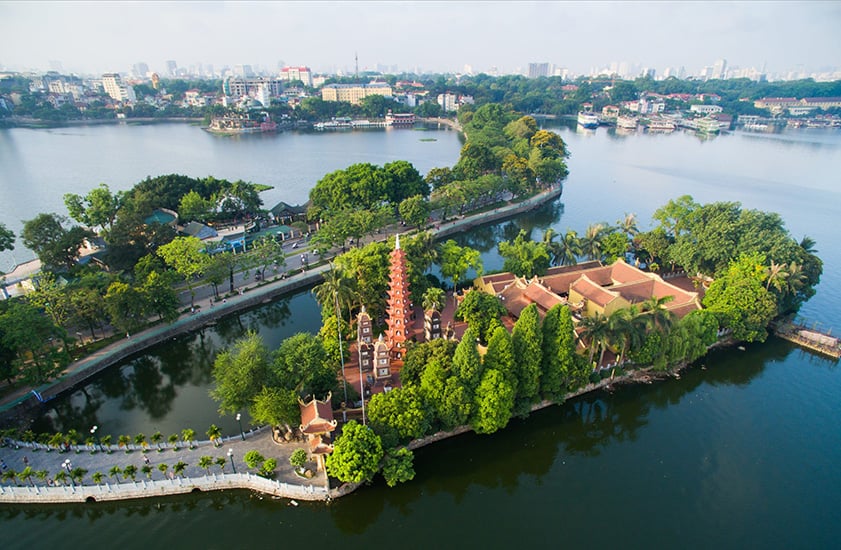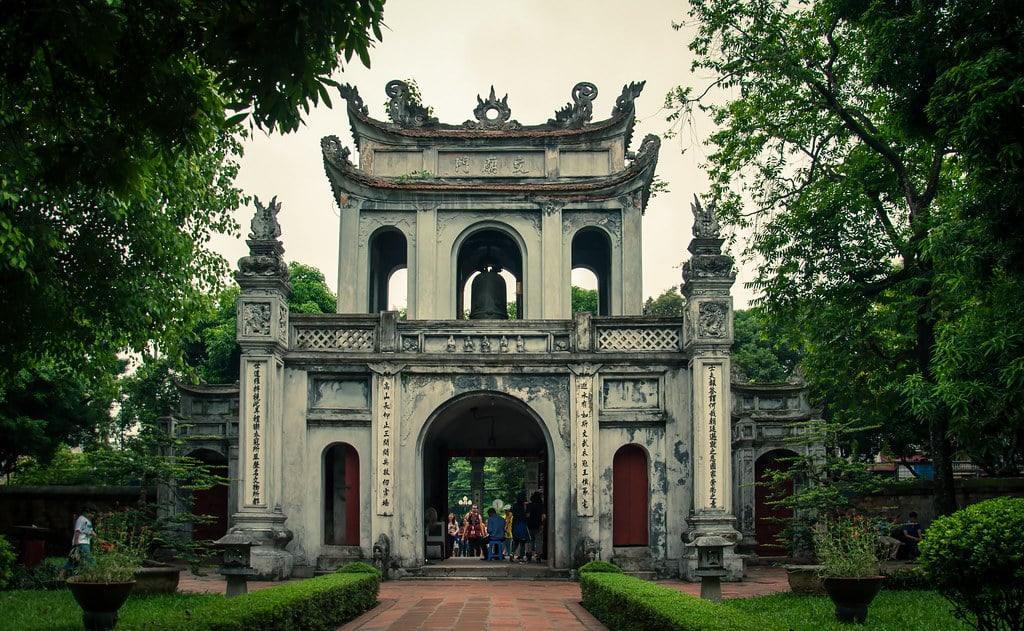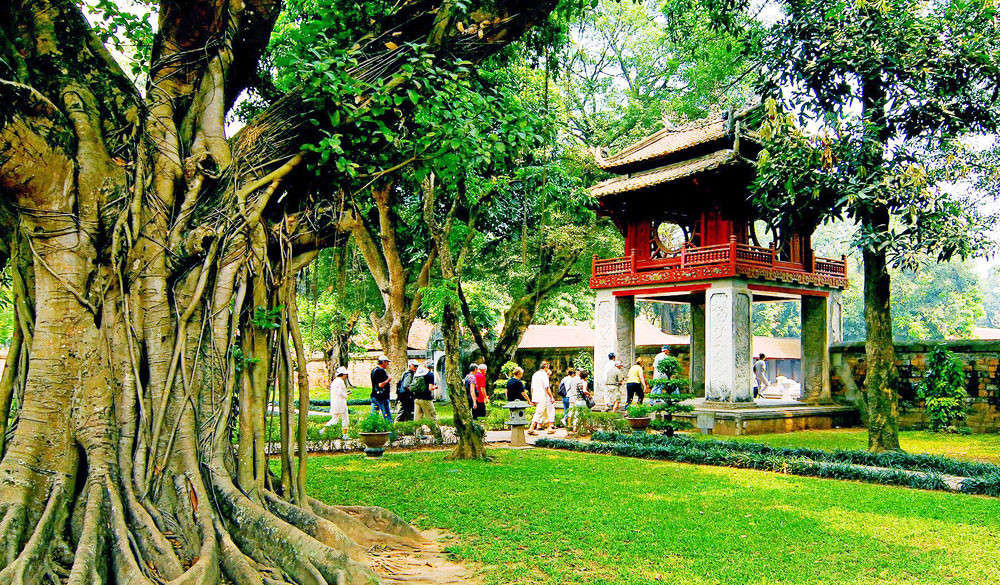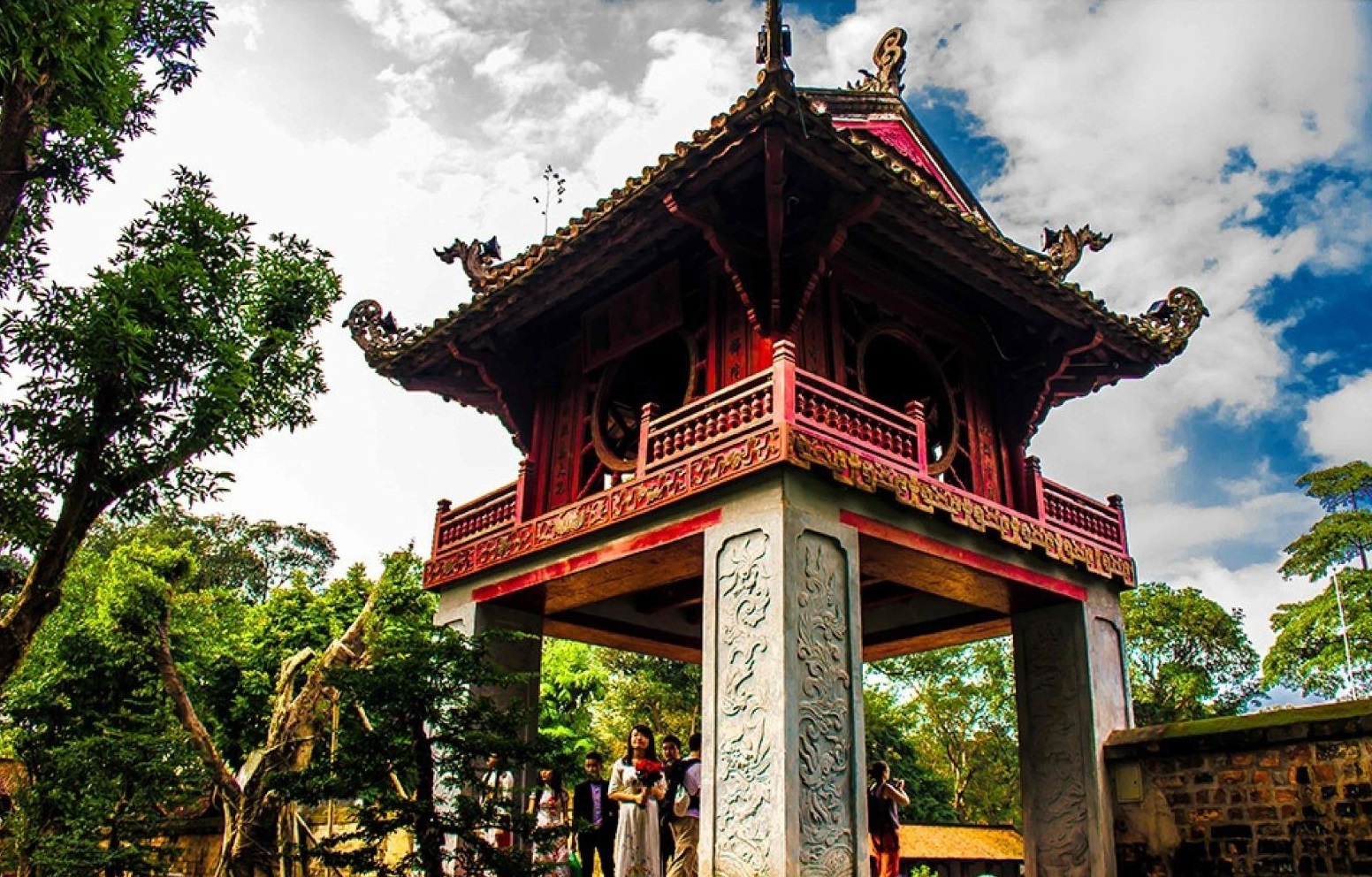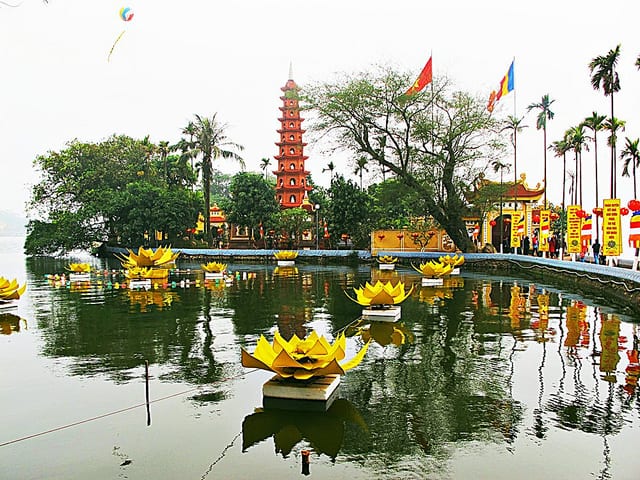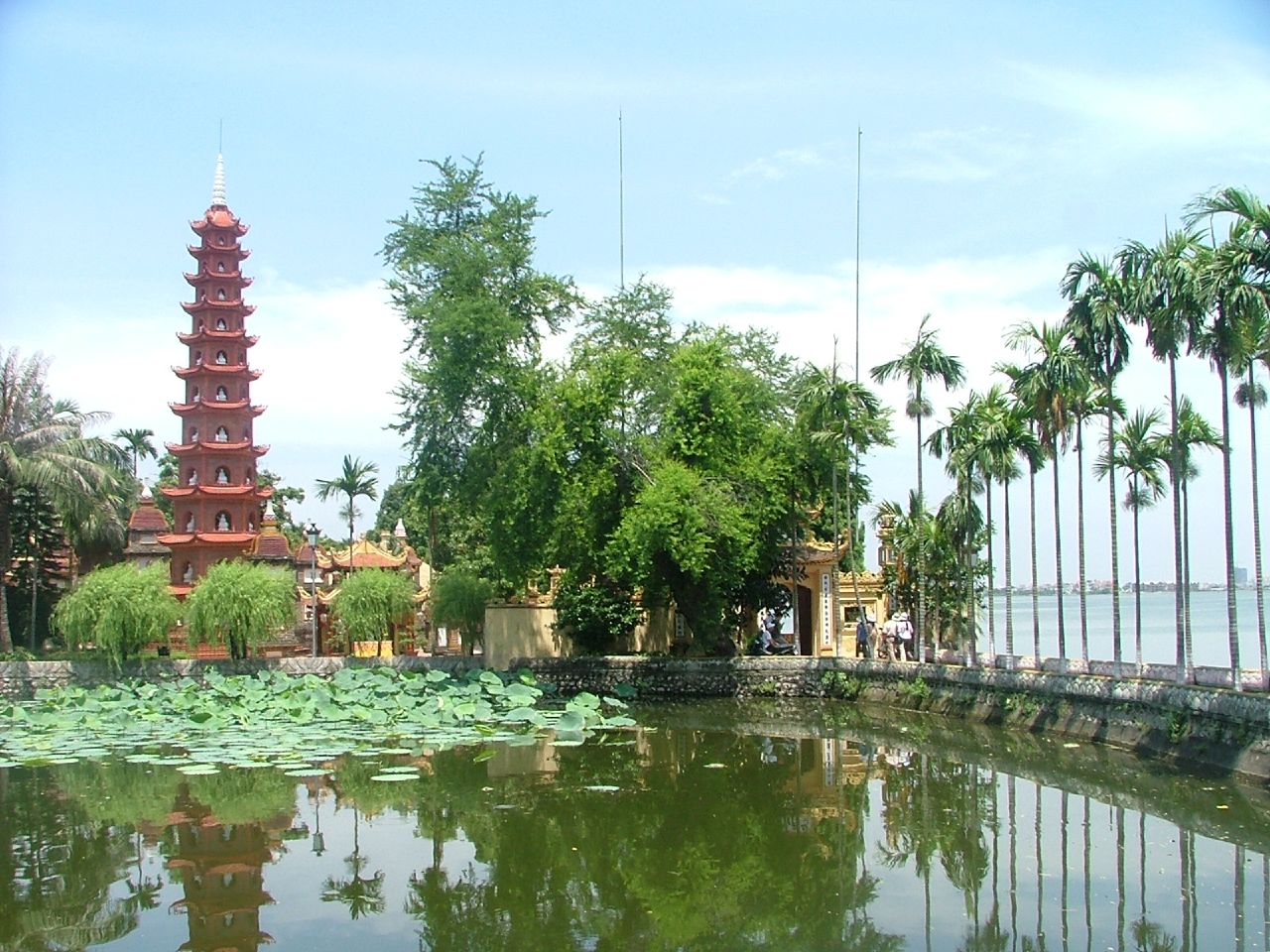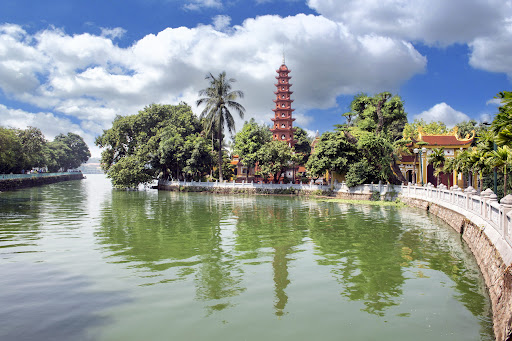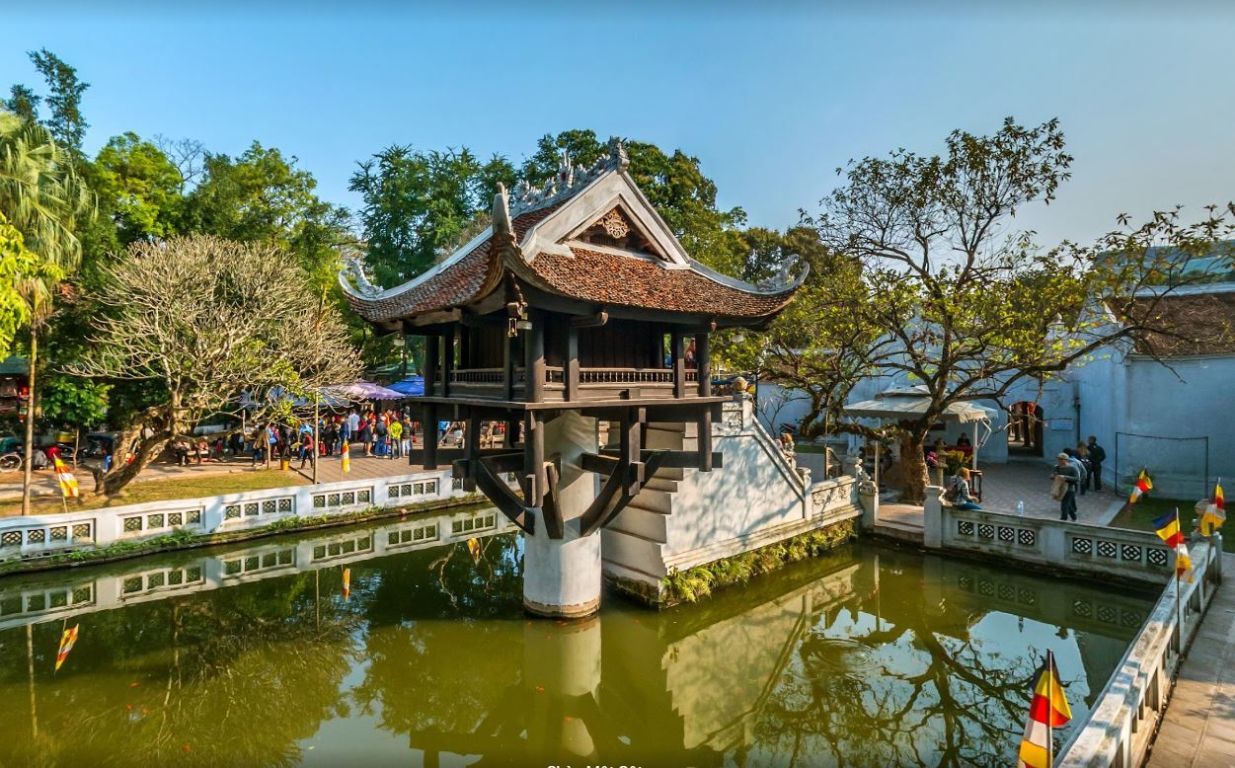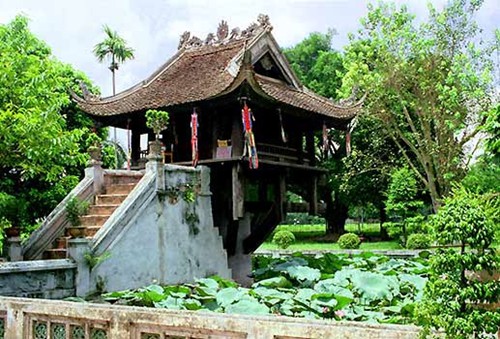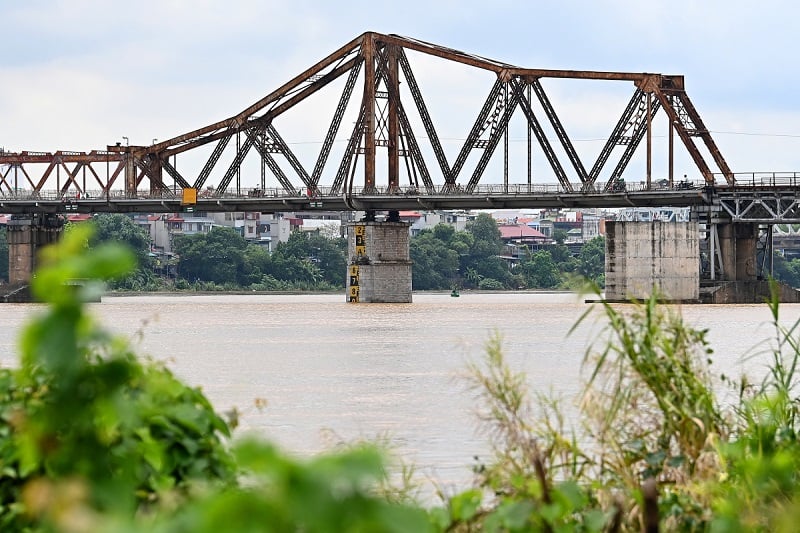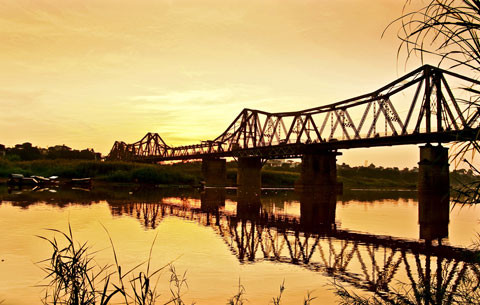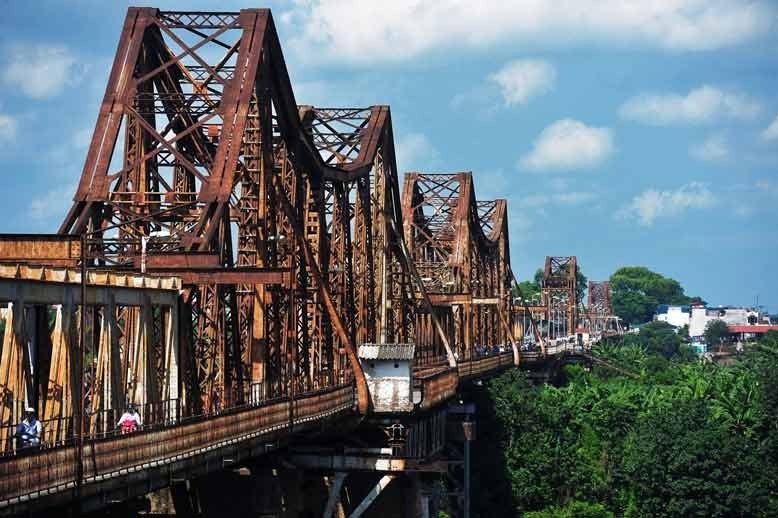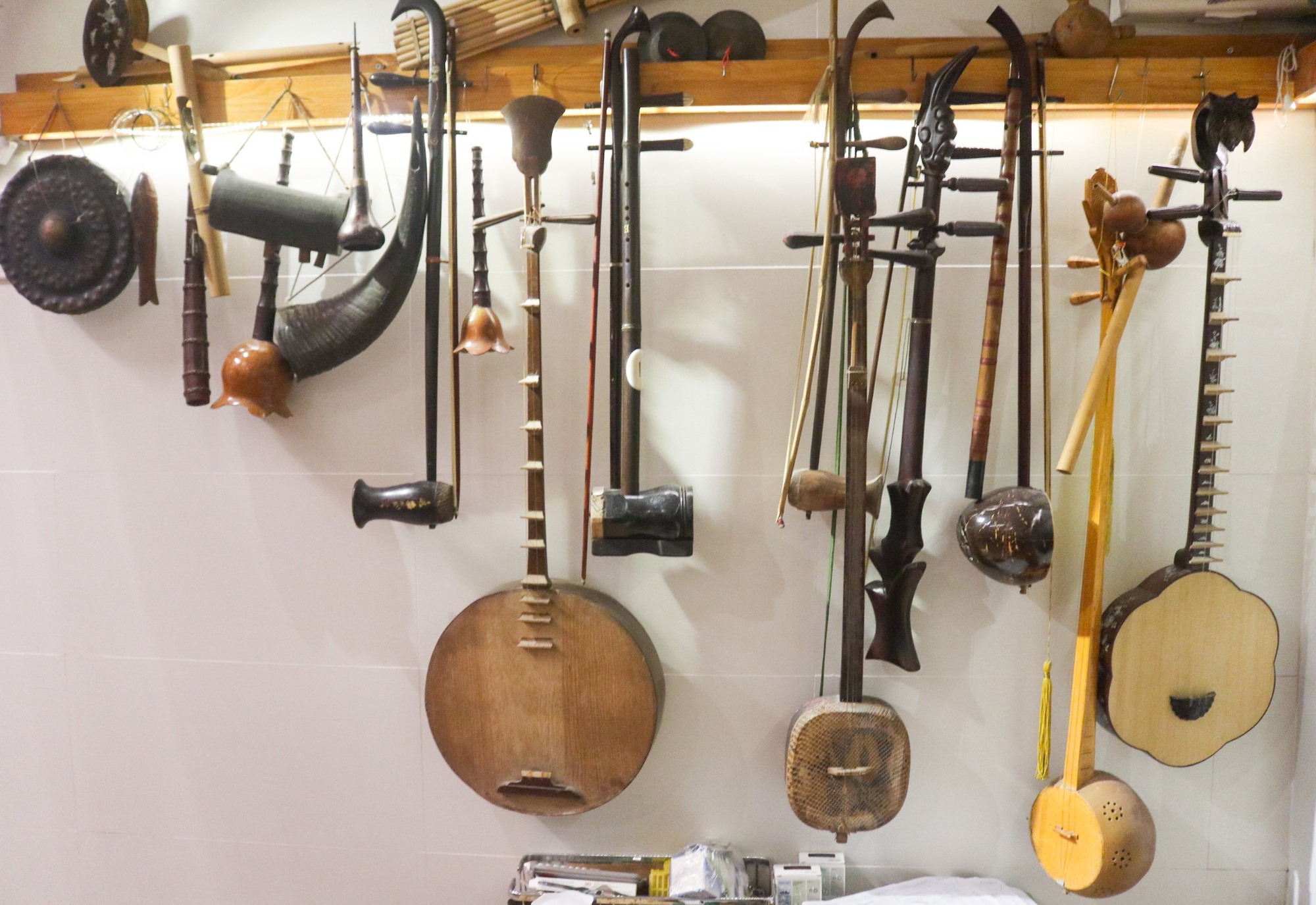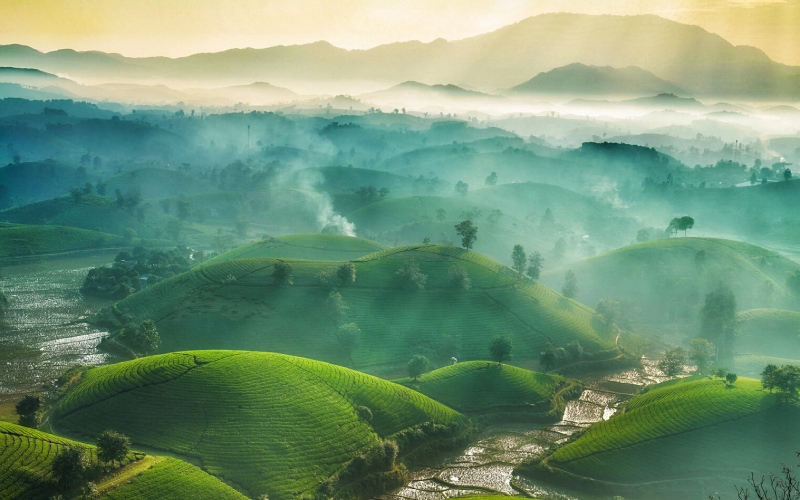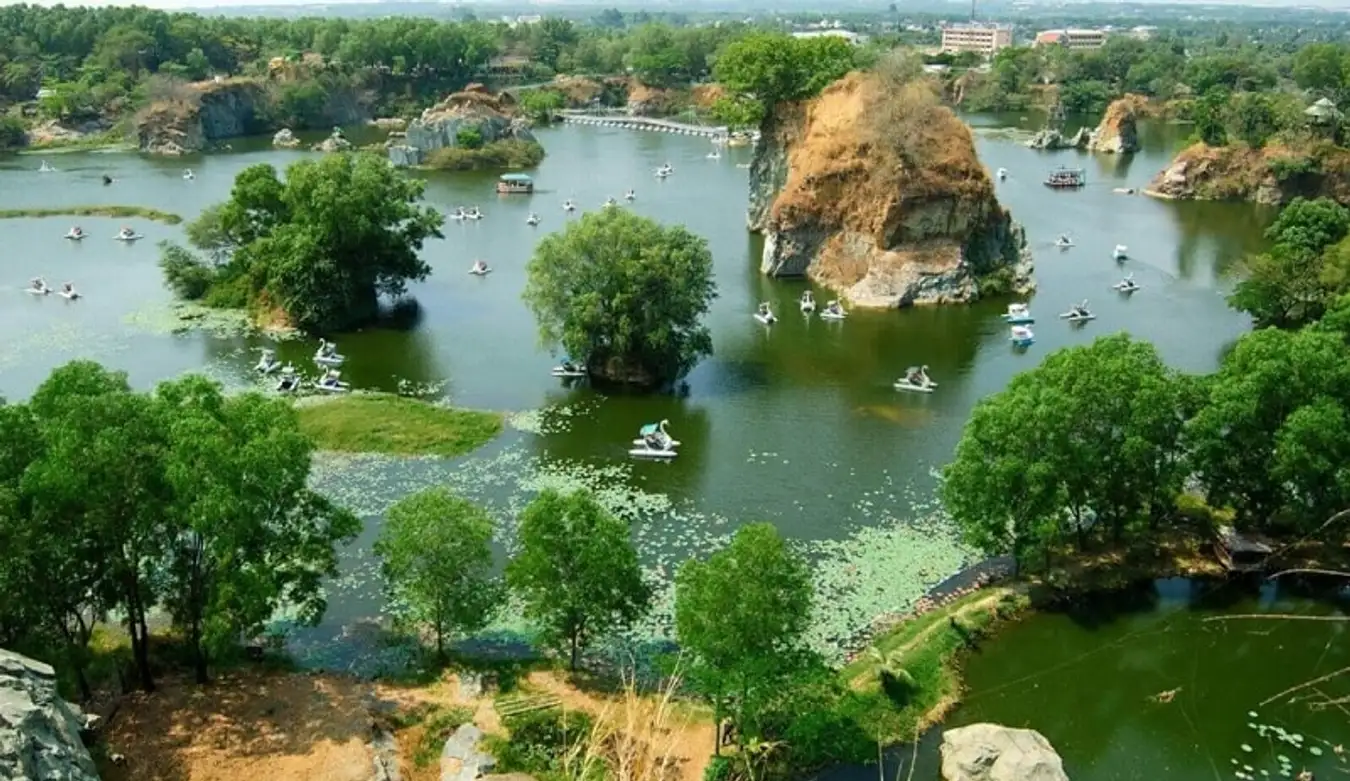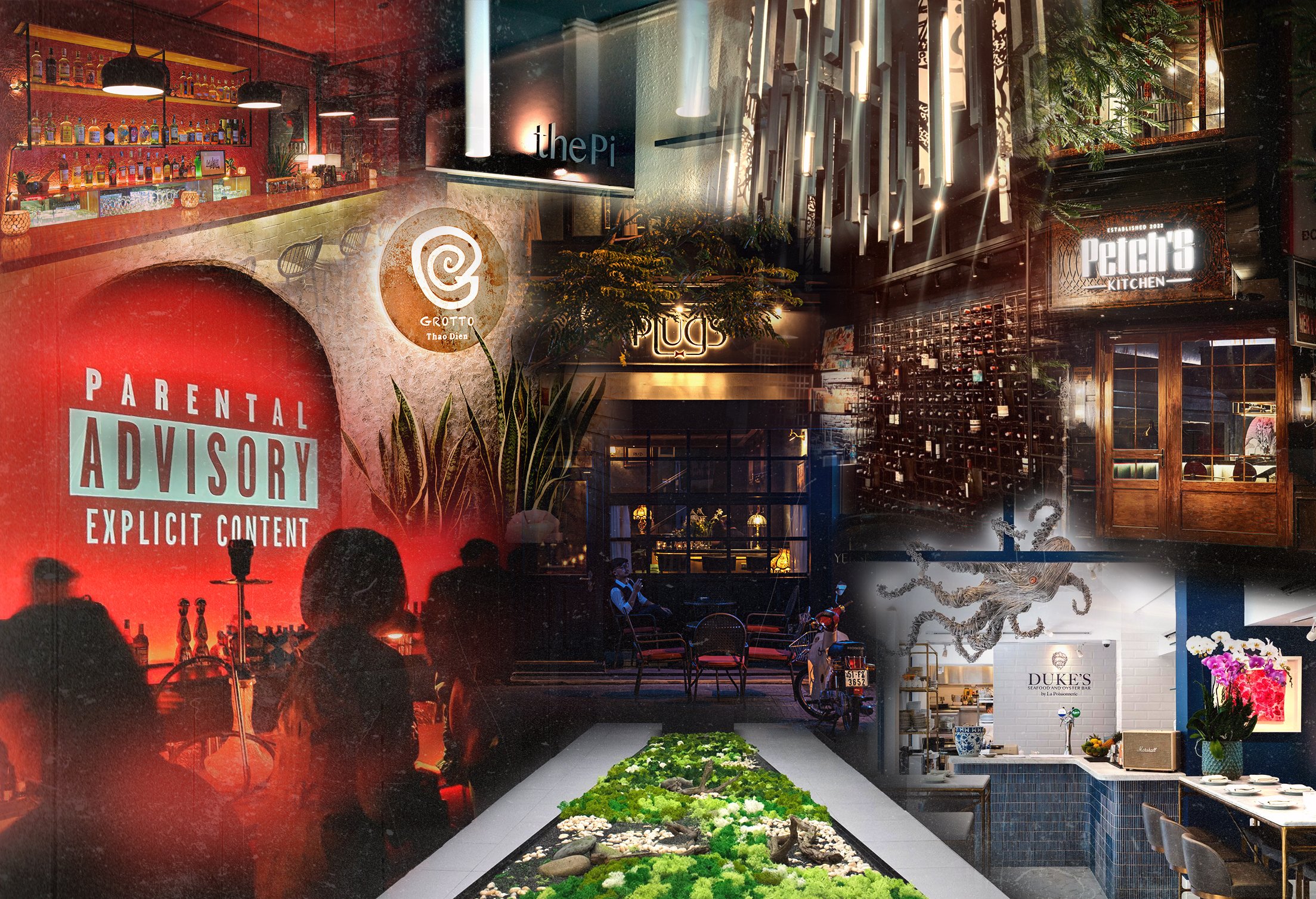Top 10 tourist attractions to visit when coming to Hanoi
Hanoi, the capital of Vietnam’s thousand years of civilization with hundreds of relics from the country’s founding period. You want to travel with friends to places in Hanoi. But you still wonder which is the most beautiful and famous place to go. If you are planning to visit the capital, please refer to the top list of must-check-in places when coming here.
Hoan Kiem Lake - Sword Lake
Hoan Kiem Lake is one of the landscapes of Hanoi Capital, this is a relic with a thousand years of cultural history. Hoan Kiem Lake, also known as Sword Lake, is called “The flower basket in the heart of the city” by foreign tourists. This is not only a place to enjoy the breeze and stroll around with many flowers, ornamental plants, towers, turtles,… but this place is also associated with the daily life activities of the people of the Capital.
This freshwater lake is located right in the center of Hanoi Capital, with an area of about 12 hectares. Surrounding the lake are Le Thai To streets in the west, Dinh Tien Hoang street in the east, Hang Khay street in the south, statue of King Le Thai To, The Huc bridge, But tower, Ba Kieu temple,… Hoan Kiem Lake is a priceless heritage associated with long-standing sacred historical and cultural legends.
About 6 centuries ago, Sword Lake was called Luc Thuy Lake. But in the 15th century, the lake was renamed Hoan Kiem Lake, associated with the legend of King Le Loi returning the magic sword. The story is about the time when the Ming enemy raged in our country, King Le Loi led his army to fight the enemy, and was given a magical sword by the magical turtle Kim Quy. Defeating the enemy, he took the throne and took the title Le Thai To, moving the capital to Thang Long. One time the king was walking on Luc Thuy Lake, a magical turtle emerged and asked the king to return the precious sword. From then on, this lake changed its name to Hoan Kiem Lake. Coming to Hoan Kiem Lake, visitors can admire two islands on the lake: Ngoc Island and Turtle Island. Ngoc Island has The Huc bridge leading to Ngoc Son temple. Turtle Island is located in the center of the lake and has a Turtle Tower built.
Around the lake, there are many flowers and ornamental plants planted, bringing a cool feeling of closeness to nature. Hoan Kiem Lake is not only a resting place after long wandering trips, visitors coming here can also feel the daily life of the capital’s people. Every year during the Lunar New Year, people enthusiastically go on spring vacations around the lake. At this time, the lake is also a meeting place for men and women, taking wedding photos of couples and souvenir photos. When summer comes, this place is an ideal place to cool off under the shady trees. Visitors will be amazed by the shy beauty of the radiant purple banyan trees and the red phoenix trees.
Ba Dinh square
Ba Dinh Square is one of the beautiful tourist destinations in Hanoi. Besides, Ba Dinh Square is also like a page of history recording the great changes of the nation. Ba Dinh Square was built by the French in the early 20th century with the name Puginier – the name of a French priest. The Square area was originally just a small flower garden with abandoned lots, surrounded by a number of villas of the old government. The name Ba Dinh began to be replaced in 1945. An interesting fact is that the person who named the square was doctor Tran Van Lai – mayor of Hanoi under the Tran Trong Kim government, not Uncle Ho like many people. people still think.
The name Ba Dinh also appeared before September 2, 1945. According to recorded documents, it is possible that Puginier Square was visited by doctor Tran Van Lai between July 20 and August 19, 1945. Regarding the meaning of the name Ba Dinh, it was inspired by the uprising against the French in Ba Dinh, Thanh Hoa in 1886 – 1887.
Since 1945, Ba Dinh Square has also undergone two name changes (Doc Lap and Hong Bang squares) to have its current name. Later, there were many opinions about changing the name of Ba Dinh Square to Independence Square or September 2 Square, but President Ho Chi Minh still kept the old name Ba Dinh.
Ba Dinh Square is not only a historical witness but also an indispensable tourist destination in Hanoi tours. Ba Dinh Square is a unique architectural complex. Through the ups and downs of history, Ba Dinh Square has its current spatial architecture.
Next to the Central Square area are architectural works such as:
- Ba Dinh Hall – completed in 1963
- Ho Chi Minh Mausoleum – completed in 1975 in the position where he stood to read the Declaration of Independence in 1945
- Ho Chi Minh Museum – completed in 1990
- Monument to the heroic martyrs who sacrificed their lives for the Fatherland – built in 1994
Right near Ba Dinh Square are the Presidential Palace relics, the One Pillar Pagoda from the Ly Dynasty and the Imperial Citadel of Thang Long. All are unique works with historical and humanistic significance to the nation. Therefore, it can be said that Ba Dinh Square is a cluster of extremely interesting tourist attractions of Hanoi capital.
Ho Chi Minh Mausoleum
Ho Chi Minh’s Mausoleum was inaugurated on August 29, 1975. The mausoleum consists of 3 layers with a height of 21.6 meters, the lower layer creates the shape of three steps, the middle layer is the central structure of the mausoleum including the exam room. Comedies and corridors, up and down stairs. Around the four sides are rows of square marble columns, the top layer is a three-step mausoleum roof. On the main side is the inscription: “President Ho Chi Minh” in plum-colored pink stone.
In his will, Ho Chi Minh wanted to be cremated and his ashes placed in three regions of the country. However, the Politburo of the Central Committee of the Communist Party of Vietnam, term III, based on the wishes and feelings of the people, decided to preserve Ho Chi Minh’s body for a long time for the benefit of the people of the whole country in the future. , especially people from the South, and international visitors can come to pay their respects.
The mausoleum is designed to be highly durable, resistant to bombs and earthquakes of magnitude 7 on the Richter scale. There are also special flood protection works in case Hanoi’s dikes break. The coffin glass must withstand large mechanical forces. The mausoleum is also designed with a “special chamber” to keep the body in place in case of war.
Ho Chi Minh’s Mausoleum is a major cultural and artistic project. The mausoleum was built on the old foundation of the platform in the middle of Ba Dinh Square, where Ho Chi Minh chaired large rallies and read the Declaration of Independence giving birth to the Democratic Republic of Vietnam. Construction on the mausoleum officially started on September 2, 1973.
Construction materials were brought from many regions across the country. Sand was taken from Kim Boi stream, Hoa Binh province by Muong ethnic people; Pebbles are transported from streams in Son Duong, Chiem Hoa, Ngoi Thia, Tuyen Quang…; Stones chosen to build mausoleums were from all over the place: Stuffed stone in Thanh Hoa, Hoa stone (Tha Pagoda), red stone from Non Nuoc mountain…; Crushed stone is brought from Hoang Thi quarry (Thac Ba, Yen Bai), sand is also taken from Thanh Xuyen (Thai Nguyen). People along the Truong Son range also sent out 16 types of precious wood. Tree species from all over the region are brought here such as: brown tree in Hung Temple, ban flowers in Dien Bien-Lai Chau, bamboo from Cao Bang… Youth also organizes labor participation sessions in grinding. kick, weed, plant trees. The electrical system for lighting, mausoleum design and preservation of Ho Chi Minh’s body were undertaken by Soviet experts. The Soviet Union also sent twenty thousand polished marble and granite slabs to decorate the Mausoleum.
St. Joseph's Cathedral, Hanoi
Considered one of the symbols of Hanoi, Hanoi Cathedral is a destination that is hard to miss during many tourists’ trips to explore the capital. In particular, coming to Hanoi Cathedral during the sacred Mass, visitors will have many unforgettable experiences. Hanoi Cathedral’s official name is St. Joseph’s Cathedral. This is the cathedral of the Archdiocese of Hanoi and is also home to the throne of the Archbishop. Hanoi Cathedral is considered the oldest church in Hanoi capital. Not only is it a place where religious activities of parishioners of the Archdiocese of Hanoi regularly take place, Hanoi Cathedral is also a famous tourist destination in Hanoi, attracting a large number of domestic and foreign tourists. Sightseeing country.
Hanoi Cathedral was built in 1884 with a total cost of about 200,000 French francs at that time. Funds for building the church were raised by the Bishop through two lottery rounds in 1883 and 1886. The church was inaugurated on Christmas 1887. The reason the church is called St. Joseph’s Church is because In 1678, Pope Innocent XI canonized Saint Joseph – the foster father of Jesus as the patron saint of Indochina countries. Therefore, Hanoi’s largest cathedral will be honored as “Cathedral of Saint Joseph”.
The architecture of Hanoi Cathedral is designed in European medieval Gothic style. This is considered a model architectural style of churches, very popular during the Renaissance. Hanoi Cathedral has a very wide and large curved dome facing the sky. The church is 64.5m long and 20.5m wide. The two bell towers are 31.5m high. At the top there is a cross made of stone. In front of the church there is a quite large square. In the center of the square there is a metal statue of the Virgin Mary.
The main material for building the church is terracotta bricks. The wall surface is plastered with sandpaper. The doors and window systems are decorated with sparkling stained glass paintings of Saints. The sanctuary is decorated in the style of traditional folk art, using mainly wood materials, with many carved details painted in red and gold.
Hanoi Cathedral has a set of 5 Western bells hanging in 2 bell towers, including 4 small bells and 1 large bell. The front of the church has a large clock. The watch has an engraved alarm system, time alarm and is directly linked to 5 bells. Besides participating in Masses, visitors can also visit Hanoi Cathedral. This place is considered one of the beautiful tourist destinations in Hanoi with extremely unique and impressive architecture.
Hồ Tây (West Lake)
West Lake is also known as Mu Suong Lake (Dam Dam), Trau Vang Lake (Kim Nguu Lake), and Xa Cao Lake. Each name holds a story about the origin of the legendary West Lake. West Lake is the most romantic corner in the colorful picture of Hanoi; is a world of clear breezes, generosity and poetry. West Lake is beautiful not only because of the vast blue water surface, not only the purple color of the magnolia, the red rose petals of the poinciana every summer, the sadness of the space, the weeping willows in the winter afternoons, the shimmer of Pure morning… but West Lake is still beautiful because it is like a heart that embraces the sad and happy states of so many people.
Every early morning, hundreds of people, both old and young, find this place to breathe fresh air and exercise. The top of Thanh Nien Street is the gateway for bicycles loaded with flowers and rustic food vendors to “flow” into the heart of Hanoi. West Lake becomes a meeting point, for people to come to as a result of inertia. Thanh Nien Street, also known as Co Ngu Street, was very beautiful and used to be the boundary between West Lake and Truc Bach Lake. From late afternoon on, there were many people passing by. Some people find themselves a corner by the lake to enjoy the breeze, sip a cup of coffee at a roadside shop, enjoy the famous shrimp cakes, and eat a glass of ice cream; Go to luxury restaurants located at the edge of the lake or in the middle of the lake, or on a yacht…
Around the lake, there are currently more than 20 communal houses, temples, and pagodas that have been ranked as many famous relics with many valuable cultural artifacts such as more than 100 stone steles, 165 parallel sentences, 140 horizontal panels, nearly 20 ancient bells, 60 colors. Deified gods, over 300 statues made of bronze, wood, stone. Many pagodas and temples are like that, but perhaps Hanoians and tourists still come to Quan Thanh temple, Tran Quoc pagoda and Tay Ho palace. People come here not only to enjoy the architectural beauty of ancient temples and pagodas but also to pray for good luck and blessings… especially on the full moon days, the first day of the lunar month and holidays and Tet.
West of West Lake still has many villages. Each village here is more or less associated with a place name, a historical deposit. Nghi Tam village, hometown of the poet “Ba Thanh Quan district” with Kim Lien pagoda has unique architecture. Xuan Tao village with Soc temple worshiping Saint Giong. Trich Sai village has Thien Nien pagoda worshiping the founder of the weaving industry. Thuy Khe village has Ba Danh pagoda. Nhat Tan village with its famous peach blossom color. Then the paper village, bronze casting guild, etc.
Although the old village features have taken on a new look in the process of urbanization with high-rise buildings, hotels, and villas springing up, many villages still retain their village features with village gates and communal houses. villages, ancient houses that are hundreds of years old… West Lake is a place to relax for Hanoi people and is also an ideal place for foreigners living and working in Hanoi, with hundreds of Western villa. More than ten years ago, people only went to the West of West Lake to go to flower and peach villages, to go to pagodas, to Tay Ho palace…, in recent years, families have raced to open restaurants, many Gradually, it turned into a food court with lyrical scenery for those who wan
Ancient city of Hanoi
Hanoi Old Quarter is located to the west and north of Hoan Kiem Lake, chosen by many tourists with the intention of learning about the life, culture and people of Trang An. Not only does it help you better understand Hanoi life, but this place is also a great virtual living location with vintage style photos. In general, the roads and alleys are quite small, so to get around the city you can choose to take an electric car, rent a motorbike, or cyclo.
The Old Quarter is a densely populated place with 36 streets. This place was formed by small traders and craftsmen on the banks of the Red River. They gathered together to form a bustling, bustling commercial street. Each street here mainly focuses on selling a certain type of item. For the above reasons, tourists should not miss the old town – one of the interesting and attractive tourist destinations in Hanoi.
Quoc Tu Giam Temple
Temple of Literature is a place that cannot be ignored when introducing Hanoi. With a long history, the Temple of Literature has become a stopover attracting domestic and foreign tourists. From the moment you step here, you will feel the scenery and architecture are tinged with old colors but full of the beauty of time.
This is a leading cultural architectural complex and the pride of the people of the Capital. People often mention the Temple of Literature when mentioning the thousand-year cultural tradition of Thang Long – Dong Do – Hanoi. Ancient architecture takes us back to old memories of the country. Not stopping there, this place is also considered a symbol of knowledge and Vietnamese education. This is a place to worship the saints, ancestors of Confucianism and Quoc Tu Giam Chu Van An – a typical teacher of high morality and virtue of Vietnamese education.
Tran Quoc Pagoda
The next name that Toplist wants to introduce to you is Tran Quoc Pagoda. This is one of the oldest temples in Hanoi and Vietnam. Tran Quoc Pagoda is located on a peninsula south of West Lake, near the end of Thanh Nien Street, Ba Dinh District, Hanoi. With its historical and architectural values, Tran Quoc Pagoda is famous as a sacred Buddhist temple, attracting many Buddhist followers, visitors, and domestic and foreign tourists.
The pagoda harmoniously combines ancient majesty with the poetry and elegance of the lush green garden and immense lake full of love poetry. Immersing yourself in the quiet and contemplative picture of Tran Quoc Pagoda, tourists also have the opportunity to explore the architectural art of the carvings. Every year, Tran Quoc Pagoda is still chosen as the place where important events related to Buddhism take place, is the place of worship for millions of believers and attracts tourists from all over who are cherishing the wish to visit once. Admire the timeless beauty of ancient temples in Hanoi.
Một Cột Pagoda
Mot Cot Pagoda is one of the symbols of Hanoi capital. The pagoda was built in 1049 during the Ly dynasty. Mot Cot Pagoda is a unique architectural work with high aesthetics, expressed through water surface art, sculpture, painting… reflecting ancient cultural values as well as national character. On the other hand, the Mot Cot Pagoda also contains many spiritual values worth appreciating.
Up to now, this place is still a destination for many people because the quiet and peaceful space makes people feel like letting go of all anger and ignorance when passing through the door leading to the Zen temple. Through many ups and downs of time, the Mot Cot Pagoda still stands there majestically, bringing a peaceful yet ancient look in the heart of bustling Hanoi. Every year, the pagoda attracts many Buddhists from all over, domestic and foreign tourists to offer incense, worship Buddha as well as visit the pagoda.
Long Bien Bridge
Long Bien Bridge is also a place that cannot be ignored when talking about traveling to Hanoi. The bridge was built by France in 1898 and was the first steel bridge across the Red River. Having experienced two national resistance wars against the French and the Americans with the people of Hanoi, this bridge is considered a symbol of Hanoi during difficult and difficult years. In the hearts of many Hanoians, Long Bien Bridge is an indelible part of memory.
Tourists often check in on the bridge, and you can also view Long Bien bridge from nearby cafes. Watching the flow of people passing by on the bridge from a different perspective will bring you many interesting experiences. For more than half a century, Hanoi’s Long Bien Bridge spanning the Red River is not only a great historical witness but also a familiar “meeting point” in the bustling city.

